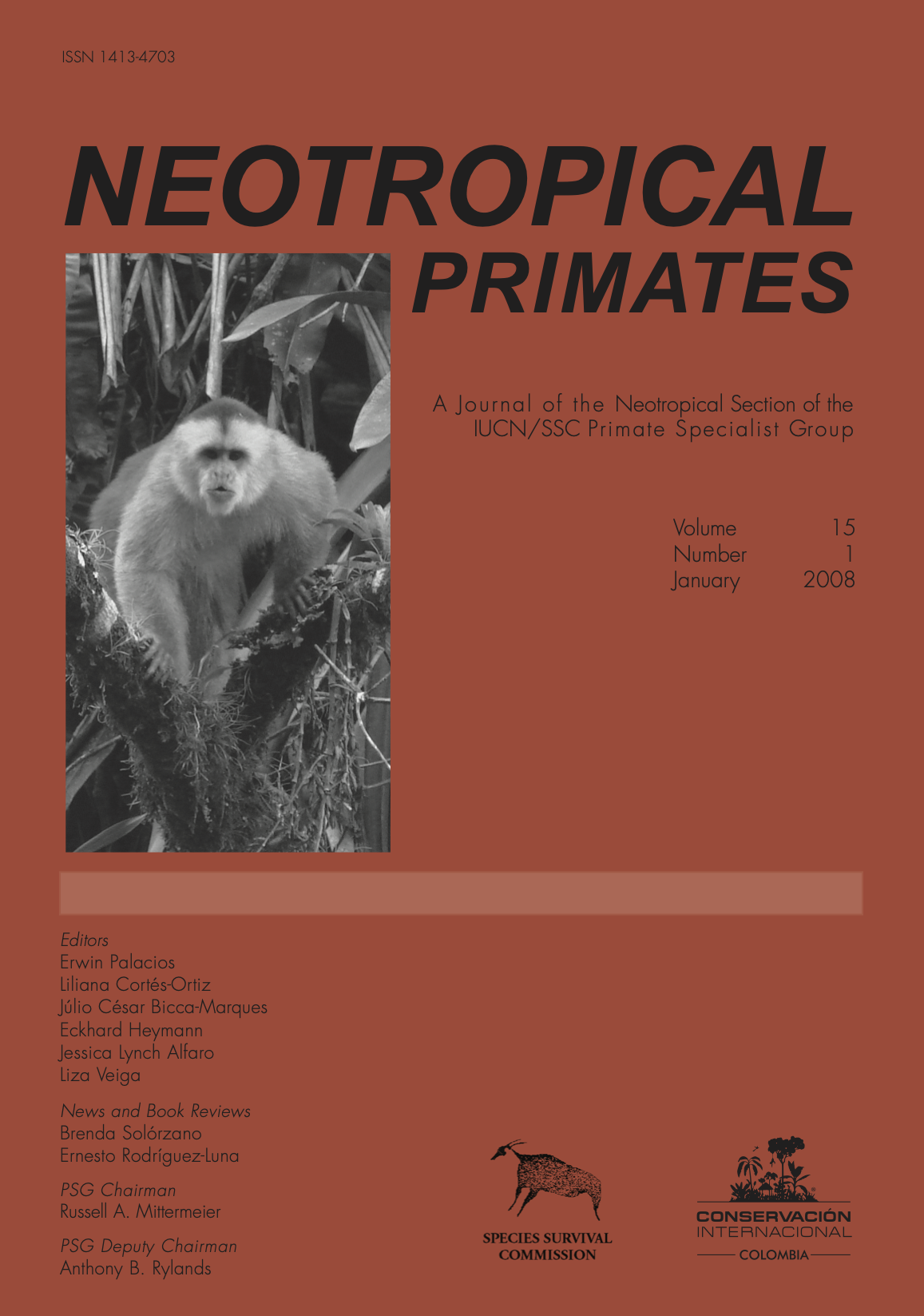Ecología de Ateles chamek Humboldt en un bosque húmedo montano de los Yungas Bolivianos
DOI:
https://doi.org/10.1896/044.015.0103Keywords:
Ateles chamek, diet, fruit availability, Estación Biológica de TunquiniAbstract
From January 2000 to March 2001 we evaluated aspects of temporal variation of activities, diet, and group size of an Ateles chamek population in an area of humid mountain forest (Estación Biológica Tunquini - EBT) in the Bolivian Yungas. We also evaluated (from April 2000) the availability of fruit species consumed by these primates. We found negative correlations between the proportion of time dedicated to resting and traveling, as well as between feeding and traveling, but no correlations were found between other combinations. The diet of these primates was highly frugivorous with a low consumption of leaves and others items. The species most consumed were Protium montanum, Casearia mariquitensis, Podocarpus sp., Anomospermum sp., various species of the genus Ficus, an undetermined species (known by the common name “canelón”), and various species of the family Lauraceae. The monthly median of the number of individuals per group did not present an evident peak, but did present a tendency towards a positive relation with non-Ficus fruits. Regarding fruit availability, we observed an increase of non-Ficus species around the beginning of the wet season, whereas Ficus species had fruits available during all months of the study. Finally, we found a negative relationship between the fruit availability of non-Ficus species and the time spent in traveling.

Downloads
Published
Issue
Section
License

This work is licensed under a Creative Commons Attribution-NonCommercial-ShareAlike 4.0 International License.


